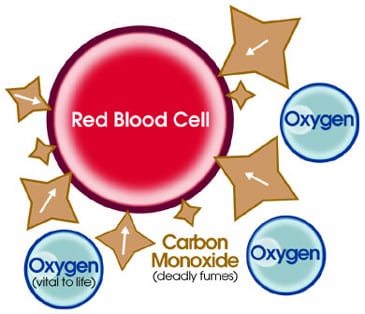Two women tragically lost their lives in Willowbrook when they apparently used their kitchen oven to provide heat inside their home. They were found Saturday at about 4:30PM. Preliminarily, Carbon monoxide fumes from the oven are believed to have resulted in their deaths.
At 4:30 PM, 01/01/11, deputies from Century Sheriff's Station responded to a rescue call in the 2200 block of El Segundo Boulevard, Willowbrook.
When they arrived, they were met by a family member who told them that after not receiving a response to phone calls, she drove there in order to check on the 63-year old woman and her 81 year-old mother. The family member said she went inside the residence and immediately smelled a strong odor of gas. She found the oven to be turned on and closed the oven door before quickly exiting the residence. She then called Century Sheriff's Station of the Los Angeles County Sheriff's Department for emergency help.
Hearing the family member's concerns and observations, deputies quickly entered the residence and found the two victims apparently deceased.
Los Angeles County Fire Department firefighters also responded and detected extremely high levels of carbon monoxide within the residence. Los Angeles County Sheriff's Department Homicide investigators responded to the residence to conduct their investigation. Century Sheriff's Station on-call clergy personnel were also summoned to the scene and assisted deputies with grieving family members.
Preliminarily, it appears as though the victims had opened the oven door and turned the oven on in order to heat their residence.
What is carbon monoxide?
Carbon monoxide, or CO, is an odorless, colorless gas that can cause sudden illness and death.
Where is CO found?
CO is found in combustion fumes, such as those produced by cars and trucks, small gasoline engines, stoves, lanterns, burning charcoal and wood, and gas ranges and heating systems. CO from these sources can build up in enclosed or semi-enclosed spaces. People and animals in these spaces can be poisoned by breathing it.
What are the symptoms of CO poisoning?
The most common symptoms of CO poisoning are headache, dizziness, weakness, nausea, vomiting, chest pain, and confusion. High levels of CO inhalation can cause loss of consciousness and death. Unless suspected, CO poisoning can be difficult to diagnose because the symptoms mimic other illnesses. People who are sleeping or intoxicated can die from CO poisoning before ever experiencing symptoms.
How does CO poisoning work?
Red blood cells pick up CO quicker than they pick up oxygen. If there is a lot of CO in the air, the body may replace oxygen in blood with CO. This blocks oxygen from getting into the body, which can damage tissues and result in death.
Who is at risk from CO poisoning?
All people and animals are at risk for CO poisoning. Certain groups — unborn babies, infants, and people with chronic heart disease, anemia, or respiratory problems — are more susceptible to its effects. Each year, more than 400 Americans die from unintentional CO poisoning, more than 20,000 visit the emergency room and more than 4,000 are hospitalized due to CO poisoning. Fatality is highest among Americans 65 and older.
NEVER heat your home by using a natural gas/propane stove or oven, kerosene/propane space heater, or charcoal grill. Carbon Monoxide is produced by the incomplete combustion of the fossil fuels - gas, oil, coal and wood used in boilers, engines, oil burners, gas fires, water heaters, solid fuel appliances and open fires.
For more info, see the CDC website.
Watch the short video about Home Heating Safety Tips from the Los Angeles County Fire Department.
content: Los Angeles County Sherriff's Department, Center for Disease Control and Prevention, R. Nelson • post: R. Nelson


No comments:
Post a Comment
What say you?